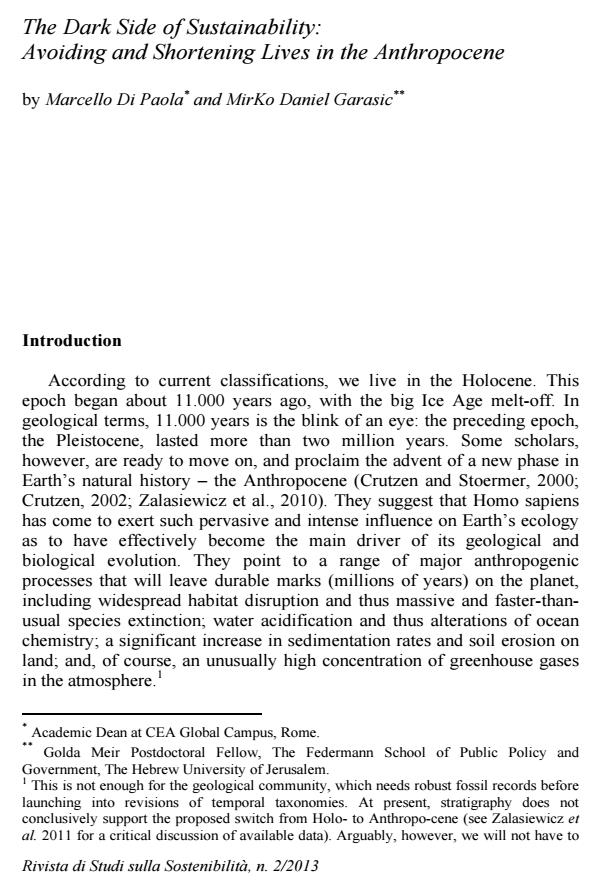The Dark Side of Sustainability: Avoiding and Shortening Lives in the Anthropocene
Journal title RIVISTA DI STUDI SULLA SOSTENIBILITA'
Author/s Marcello Di Paola, MirKo Daniel Garasic
Publishing Year 2014 Issue 2013/2
Language English Pages 23 P. 59-81 File size 656 KB
DOI 10.3280/RISS2013-002004
DOI is like a bar code for intellectual property: to have more infomation
click here
Below, you can see the article first page
If you want to buy this article in PDF format, you can do it, following the instructions to buy download credits

FrancoAngeli is member of Publishers International Linking Association, Inc (PILA), a not-for-profit association which run the CrossRef service enabling links to and from online scholarly content.
In this paper, we critically rehearse the morality of avoiding and shortening the lives of present and future consumers in order to decrease humanity’s impact on global eco-systems and spare scarce natural resources in the Anthropocene. Our main objective is not originality, but rather providing a short tour of some relatively unexplored recesses of moral reflection, as it tackles practices of sustainability that may not accord easily with our wishes about what life in our own geological epoch should have been like. We shall discuss these practices only as moral options to be embraced by individuals voluntarily, out of a sense of obligation (or perhaps also in pursuit of various benefits that may be offered as positive incentives) - not as coerced, mandatory activities imposed on individuals by some agents, such as governments.
Keywords: Antrhropocene, moral reflection, present and futures consumers, shortening and avoiding lives.
- Guantanamo and Other Cases of Enforced Medical Treatment Mirko Daniel Garasic, pp.19 (ISBN:978-3-319-22652-1)
Marcello Di Paola, MirKo Daniel Garasic, The Dark Side of Sustainability: Avoiding and Shortening Lives in the Anthropocene in "RIVISTA DI STUDI SULLA SOSTENIBILITA'" 2/2013, pp 59-81, DOI: 10.3280/RISS2013-002004